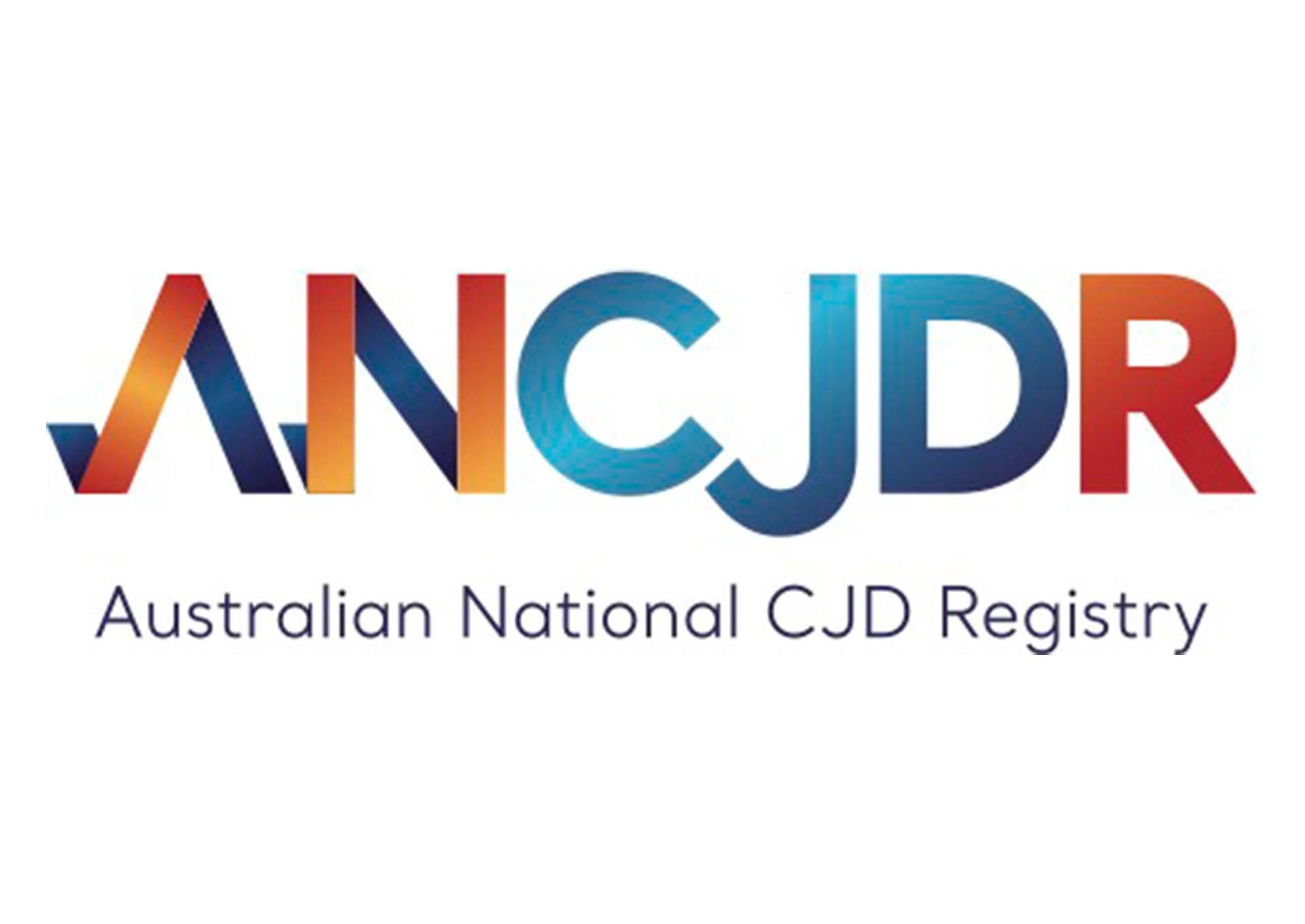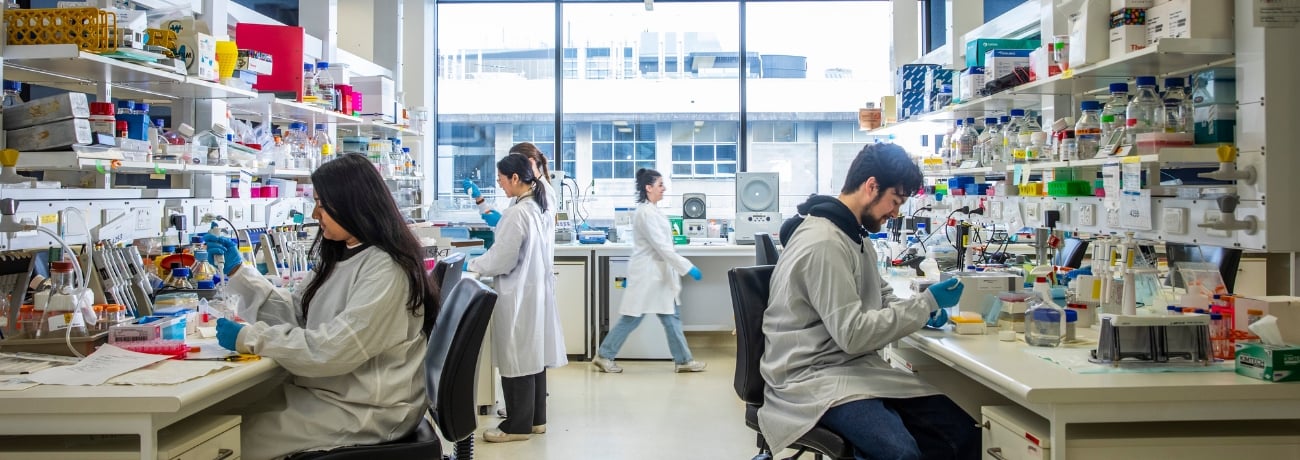Australian National CJD Registry
About us

Creutzfeldt-Jakob disease (CJD) is one of the human forms of the transmissible spongiform encephalopathies (TSEs), also referred to as prion diseases. Prion diseases mostly occur as a chance event but can be, in rare cases, attributed to a genetic mutation or acquired through a transmission event.
The Australian National Creutzfeldt-Jakob Disease Registry (ANCJDR) was established in October 1993 and is responsible for diagnostic services and the national surveillance of clinically suspected and diagnosed human prion diseases in Australia. A collaboration between The Florey and the University of Melbourne, the ANCJDR is under contract to the Commonwealth Department of Health.
The ANCJDR is grateful for the generous assistance and support from families affected by CJD and other prion diseases; their generosity allows the ANCJDR to collect invaluable information for public health surveillance and epidemiology research. If your family has been affected by CJD/prion disease and you would like to contribute to the ANCJDR’s surveillance efforts, please contact the ANCJDR Coordinator.
Testing and biopsies
The ANCJDR provides routine diagnostic testing services to aid the assessment of suspected sporadic, familial, and iatrogenic cases of CJD and other prion diseases nationwide, and as required to New Zealand and South-East Asian countries.
These tests include: the NATA/RCPA accredited CJD Biomarker Panel 14-3-3 protein ELISA and RT-QuIC assay; tissue biopsy for evidence of prion disease; and PRNP genetic testing.
CJD testing specificationsPost-mortem examinations
Only the investigation of the whole brain after death can provide a definite diagnosis of whether the individual had prion disease – providing the highest level of confidence in the diagnosis. When a differential diagnosis includes CJD, full body autopsies cannot be offered due to infection control reasons.
A brain only autopsy is voluntary and depends entirely on informed consent from Next of Kin. Consent is documented by the requesting doctor and Next of Kin signing an autopsy consent form.
As CJD brain autopsies assist public health surveillance, there is no additional cost to the family or referring institution for any aspect of the autopsy. Neuropathology results may take between three to twelve months. The neuropathology report is issued to the diagnosing and referring clinicians, who should communicate the result to the patient’s family.
Unfixed brain tissue from confirmed CJD/prion disease patients is stored indefinitely at the ANCJDR while the ANCJDR is operating and can be made available for DNA extraction for PRNP testing, if necessary.
Contact details by state/territory
Autopsies are completed on referral by doctors through their state health system. Further details on this process and state contact information can be provided by the ANCJDR Coordinator.
State contacts
| State or territory | Medical institution | Contact phone |
| Victoria | The Alfred, mortuary | 03 9076 2684 |
| Tasmania | Royal Hobart Hospital, mortuary | 03 622 8333 |
| New South Wales and Australian Capital Territory | Royal Prince Alfred Hospital, Department of Neuropathology | 02 9351 0943 |
| South Australia | Royal Adelaide Hospital, mortuary | 08 8222 4894 or 08 8222 3295 |
| West Australia | Fiona Stanley Hospital, mortuary | 08 6152 5218 |
| Northern Territory | Royal Darwin Hospital, Centre of Disease Control | 08 8922 8510 |
| Queensland | Sunshine Coast University Hospital | 07 3646 6315 |
Suspected cases
Prion diseases, including CJD, are a notifiable disease in Australia – information on how the federal government define and monitor cases can be found via the Department of Health and Aged Care. The early warning function of surveillance is fundamental for regional, national, and global health security, while monitoring trends of a disease informs control or prevention policies. Notification of a patient is indicated where a strong clinical suspicion for prion disease exists.
Suspected CJD should be notified to the ANCJDR and relevant state or territory health departments. Notification requires completion of the public health risk questionnaire to allow case classification and identification of any risk factors. An information statement is available, which details how the surveillance and epidemiology of this illness is conducted by the ANCJDR.
Infection control
Prion disease is transmissible from one person to another only through invasive medical procedures involving high infective tissue (ie. brain, spinal cord, posterior eye chamber, olfactory epithelium, cranial and dorsal root ganglia) by the transfer of misfolded prion protein. Transmission can occur from anyone with prion disease, irrespective of whether their prion disease is sporadic, inherited or iatrogenic.
Infection control precautions apply for the care of a patient with suspected prion disease/CJD or a person at increased risk of developing prion disease/CJD. Infection control, as described by the Australian Government Department of Health and Ageing should be considered.
At-risk individuals
Those considered at high risk for the condition include patients who report neurological symptoms and display neurological signs of prion disease or have been diagnosed with suspected CJD/prion disease. Symptomatic patients with a recognised health care associated risk factor are also considered to be high risk.
Additionally, symptomatic patients who fit into the following categories should be considered at a high risk:
- An individual, who has undergone predictive testing and has been confirmed as a carrier of a pathological PRNP gene mutation.
- An individual, from a known genetic family, who has not undergone predictive testing to rule out or establish their own risk status.
- An individual, who has had two or more first or second-degree relatives, who have died of CJD or other prion disease.
Genetically related members of any family, in which there is a strong family history of dementia or neurological illness, that are not suggestive of prion disease or not completely assessed for prion disease, are classified as low risk.
The general population, who represent no identified increased risk of CJD transmission, are classified as background risk. These also include:
- Genetically related members of a patient with sporadic prion disease (no mutation confirmed by PRNP testing) are classified as background risk.
- Members from a known genetic family, who have undergone predictive testing and have a negative PRNP test result.
These individuals can also qualify as a blood donor if they fit all other donation criteria and provide appropriate documentation (ie. PRNP test result).
Resources
For further information on prion diseases, Creutzfeldt-Jakob disease and surveillance visit:
Contact
E [email protected]
P +61 3 8344 1949 (8am-4pm Monday-Friday)
F +61 3 9349 5105
The CJD Support Group Network provides a 24-hour hotline (1800 052 466) and can contact the ANCJDR coordinator in urgent matters.
Holiday period closures
ANCJDR is closed on the below days. Please hold all diagnostic samples for CJD biomarker testing at -20° Celsius or -80° Celsius during affected periods.
- National and Victorian public holidays
- Christmas and New Year period: 25 December to early January (Florey closure may occur a few days prior to 25 December)
- Easter: Good Friday to the following Tuesday
- Melbourne Cup Carnival: Monday and Tuesday of the first week in November
ANCJDR management
Professor Steven Collins – Director
Professor Colin Masters – Director
Dr Christiane Stehmann – ANCJDR coordinator
Ms Shannon Sarros – Quality Manager
Research and postdoctoral fellows
Dr Vicki Lewis – Research Fellow
Dr Matteo Senesi – Research Fellow
Research and technical staff
Ms Amelia McGlade – Research Assistant
Ms Priscilla Agustina – Research Assistant
Specimens
Specimens can be sent for testing to:
Australian National Creutzfeldt-Jakob Disease Registry (ANCJDR)
The Florey
Kenneth Myer Building, 30 Royal Parade
Gate 11, Rear loading Dock
The University of Melbourne, Parkville, VIC 3052
Complaints
Complaints about the ANCJDR operations can be forwarded to the ANCJDR Directors, Professor Steven Collins and/or Professor Colin Masters.
Complaints related to the ANCJDR research specific operations or potential breaches of ethical responsibilities can be forwarded to the University of Melbourne’s Human Research Ethics Committee:
Manager
Human Research Ethics Office for Research Ethics and Integrity
The University of Melbourne VIC 3010
T 03 8344 2073
E [email protected]
